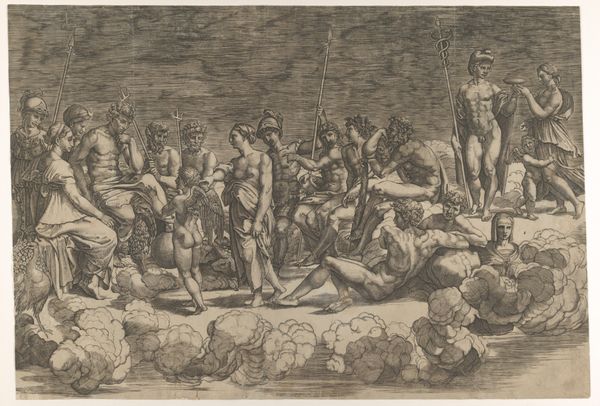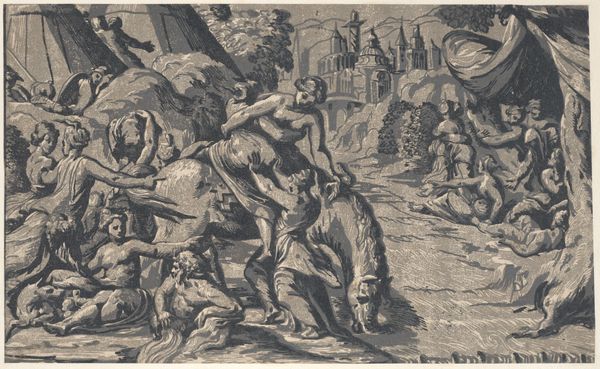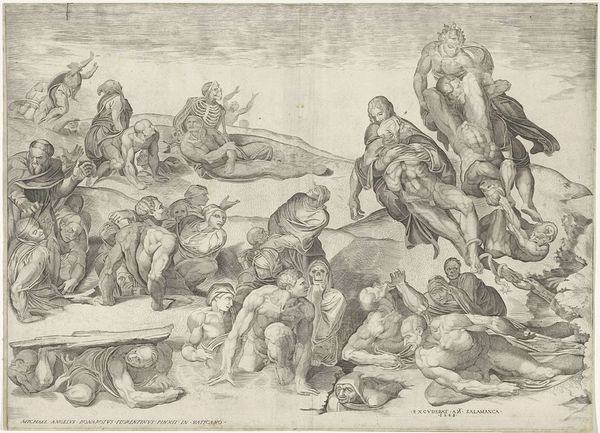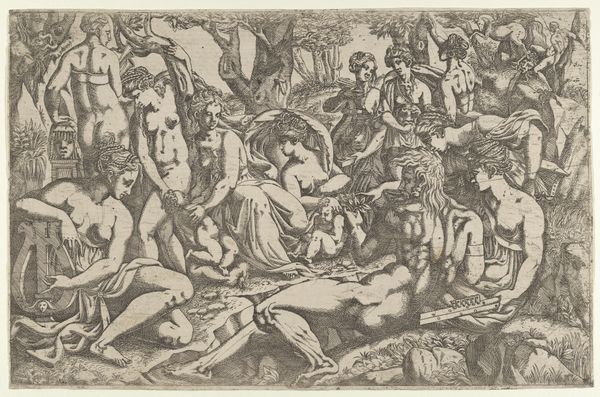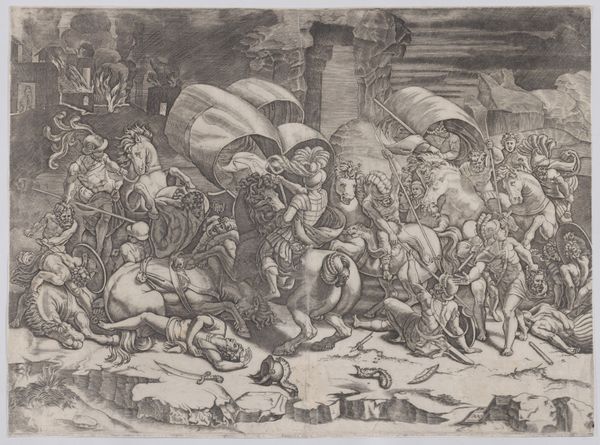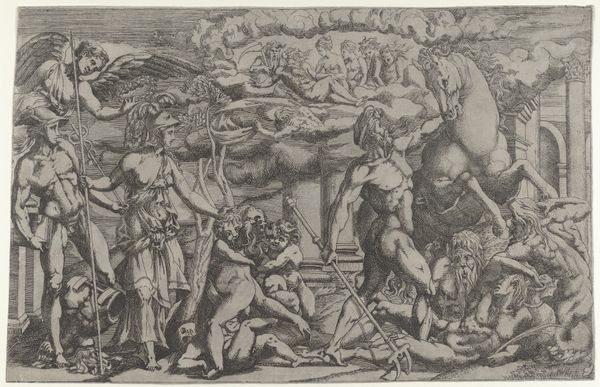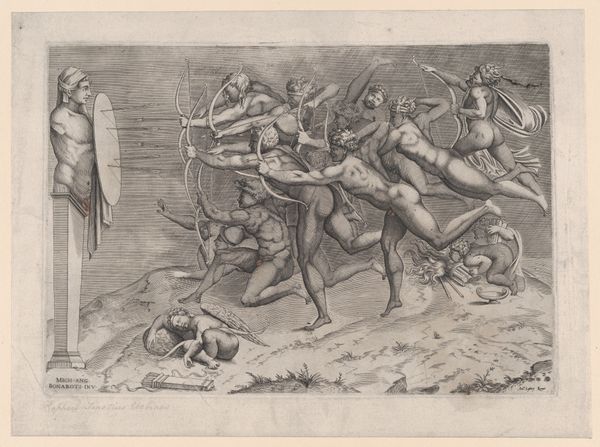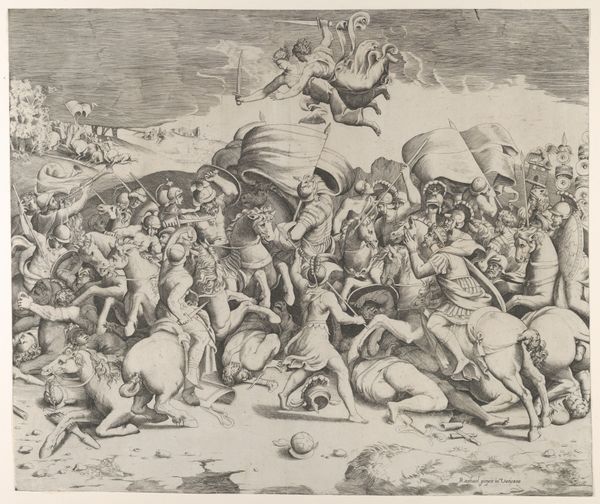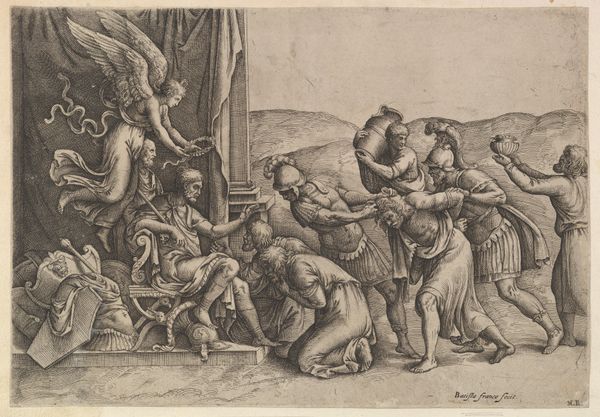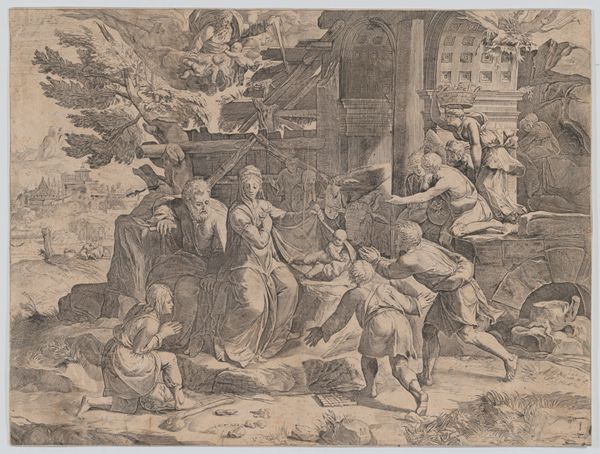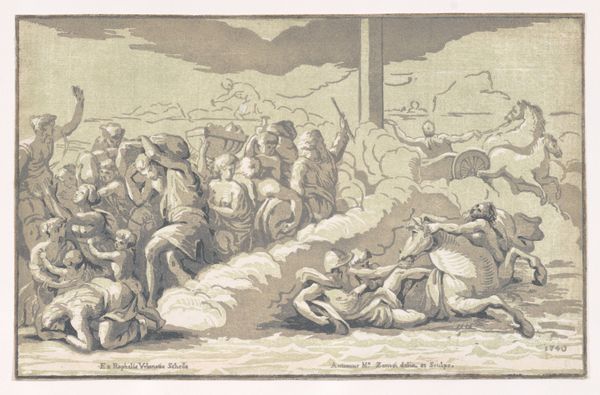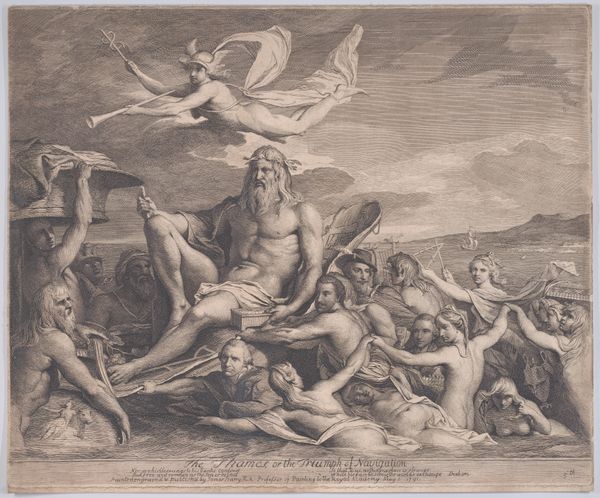
Allegory with Minerva at right, leading a young man towards Mount Parnassus, where the Muses sit 1620 - 1647
0:00
0:00
drawing, print, engraving
#
drawing
#
allegory
#
baroque
# print
#
history-painting
#
engraving
Dimensions: Sheet (Trimmed): 15 9/16 × 21 7/16 in. (39.6 × 54.4 cm)
Copyright: Public Domain
Curator: Let’s turn our attention to a striking engraving from the early to mid-17th century, currently held at the Metropolitan Museum of Art. The work, attributed to Johann Friedrich Greuter, is titled "Allegory with Minerva at right, leading a young man towards Mount Parnassus, where the Muses sit." Editor: My first impression is one of orchestrated chaos! So many figures are crammed into the composition, all rendered in a meticulous yet somewhat frenetic style. The texture, particularly in the rocky landscape and drapery, feels almost tactile. Curator: Precisely. It's the labor involved in creating this print, with its precise lines, that interests me. Think of the physical effort and skill needed to translate such a complex image onto a copper plate. Also, it represents a mode of reproducible artwork consumed and circulated within the intellectual circles of the time. How widely would this have been disseminated, and by whom? Editor: Beyond its production, there’s an intentional depth to unpack in the visual storytelling. The very iconography draws on layers of meaning. Minerva, as a figure of wisdom and strategic warfare, guides this young man toward Parnassus. He clearly represents ambition—perhaps a future artist or scholar seeking inspiration from the Muses. But why Mount Parnassus? What deeper significance does that hold? Curator: Well, Parnassus has long been viewed as the symbolic home of music, poetry, and learning. Look at the Muses themselves: each would have been identifiable by associated attributes related to specific disciplines or muses they presided over. The river gods are intriguing in their materiality as they pour resources from below where their seated posture and body type stand out in contrast from the finer clothed deities above. Editor: Exactly. And notice the figures almost erupting from the base of the mount—they appear as gnarled, primordial beings, perhaps representing the raw, unrefined sources of creativity. The printmaker intentionally evokes the layers of inspiration as part of his storytelling. How interesting that raw form and intellectual concept all contribute to this idea. Curator: A point well taken! One of many things the allegory shows that resonates today about making art and how artists themselves access that space in society. It does invite me to reflect how the work was printed; perhaps some details or elements were intentionally included in multiples? Or to signify rank/value of ownership? Editor: It truly becomes more compelling, especially by thinking how, through visual and material form, knowledge takes new shape!
Comments
No comments
Be the first to comment and join the conversation on the ultimate creative platform.
